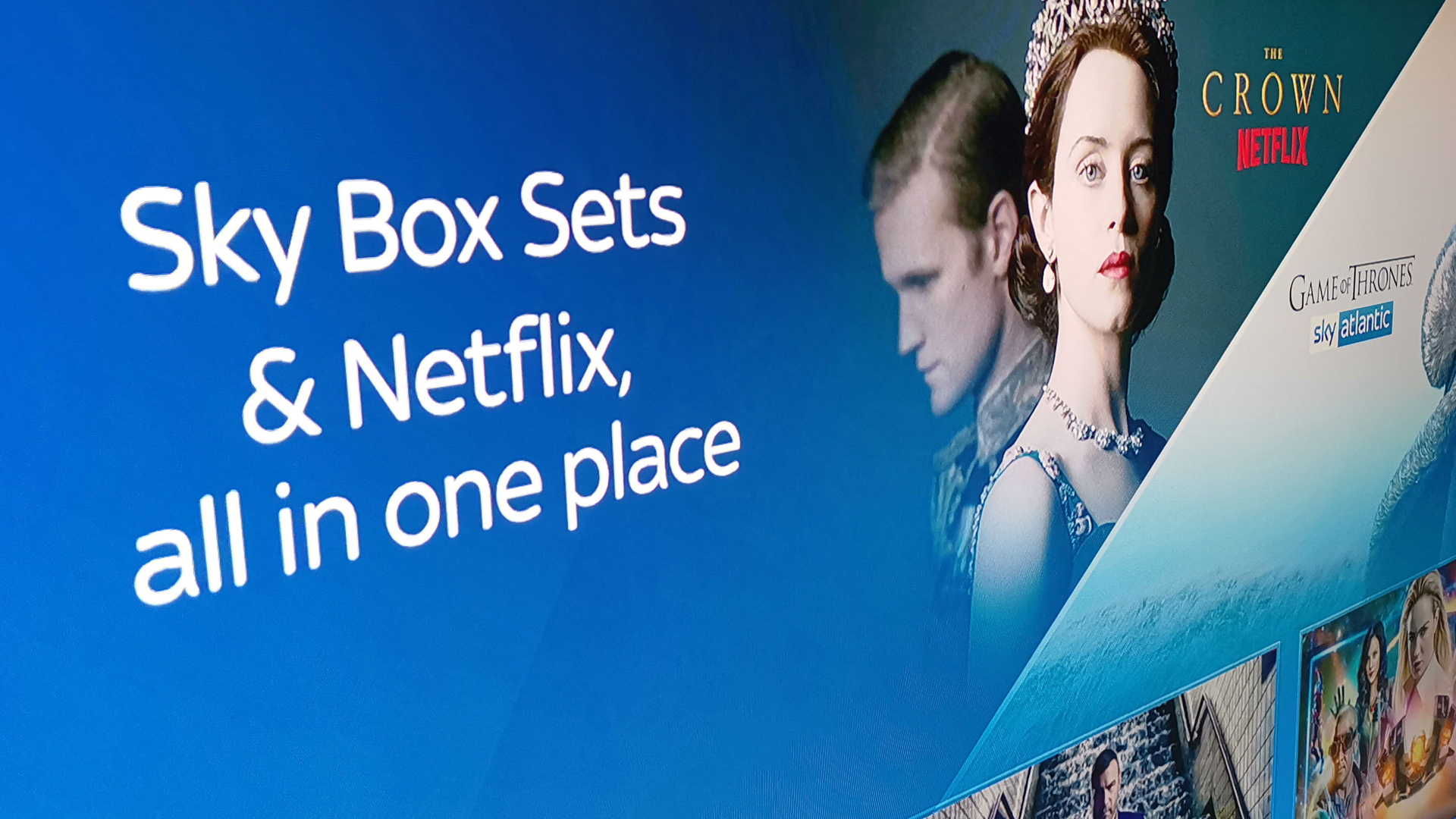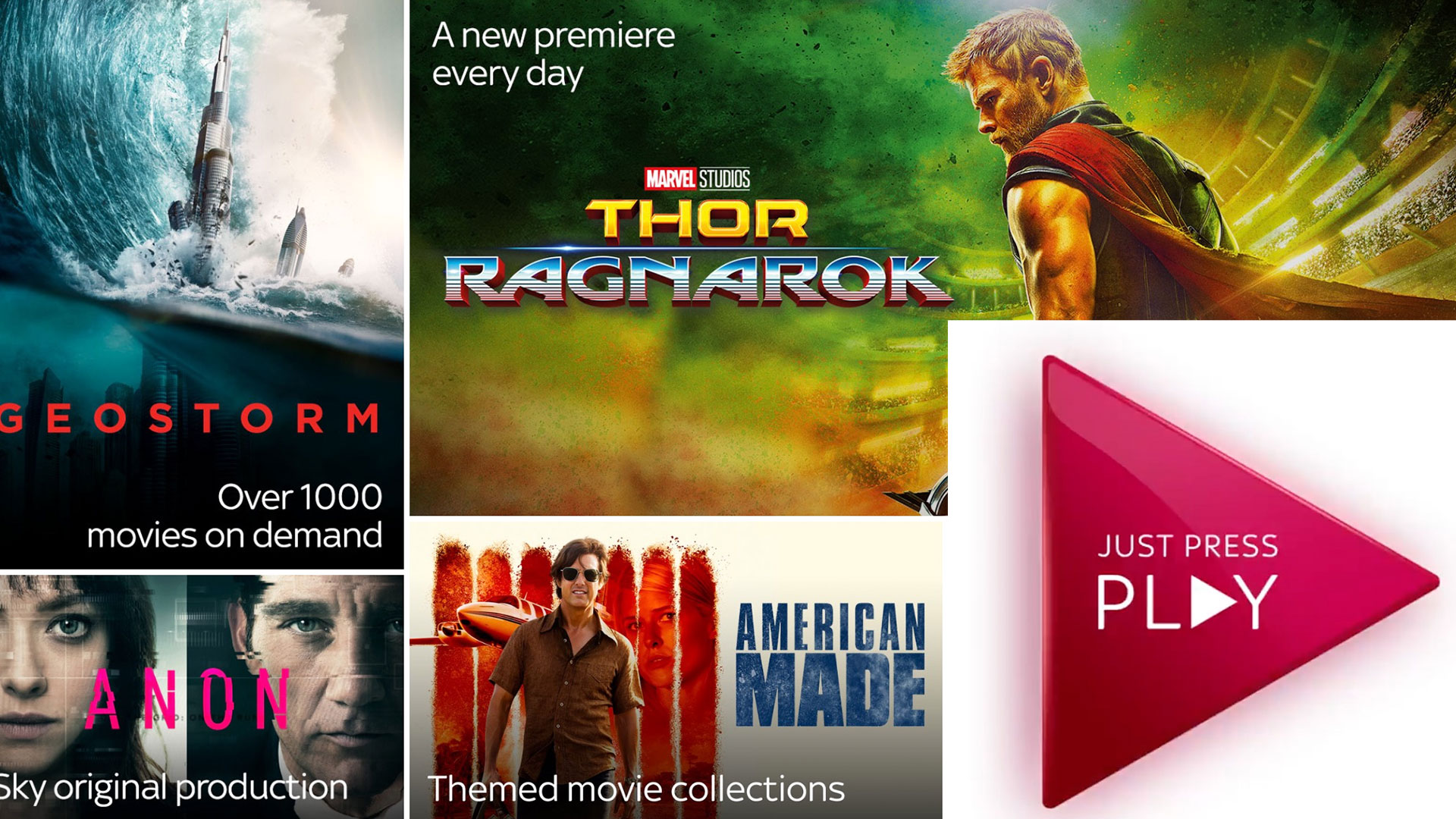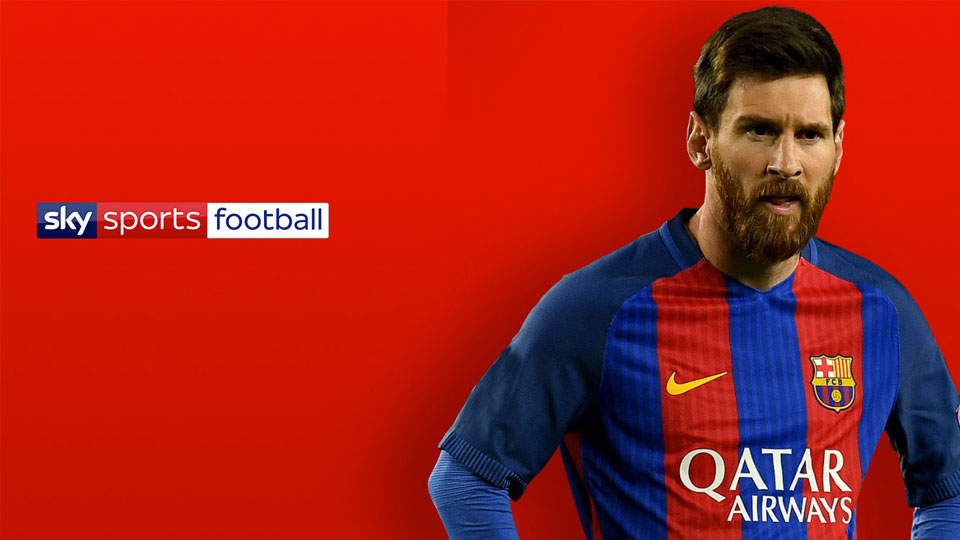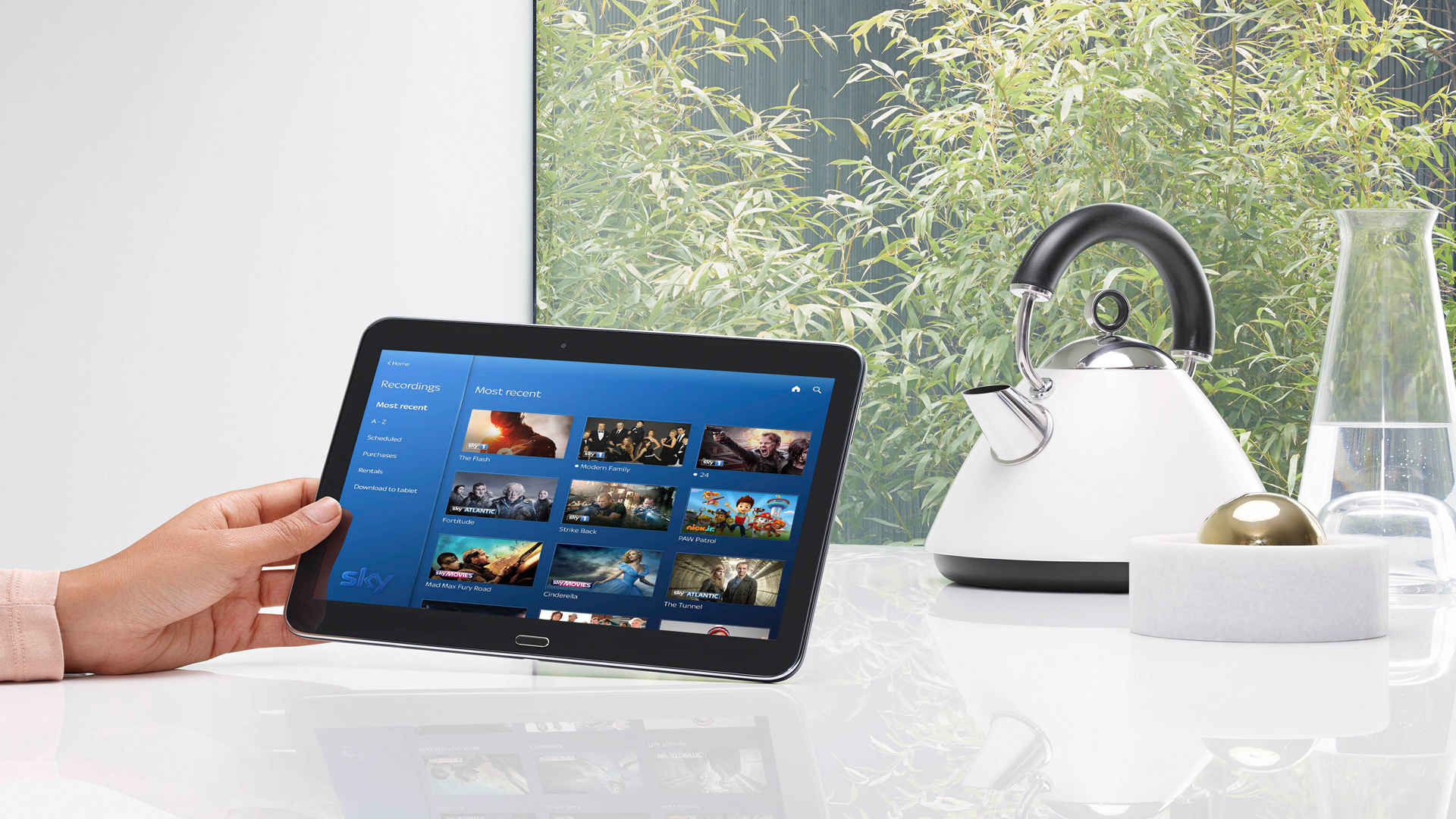
You don’t need to be a broadcasting expert to appreciate just how dramatically Sky has transformed the UK TV landscape. From set top box recorders to video on demand (VoD) to the current power of Sky Q , much of the telly technology we take for granted today has been pioneered by the satellite TV giant.
Sky launched the first 24-hour rolling news channel in 1989, and has been close to the front of the technical TV revolution ever since, a staunch advocate of changing the way we absorb moving images.
As the satcaster passes its 30 year anniversary, we look back at its origins while looking forward to predict what TV tech is yet to come.
The early Sky years
Sky may have started out as a cable channel provider, but it didn’t take long to switch focus to the living room.
Its early analogue years were a work in progress, but with the launch of Sky Digital in 1998, everything changed. For one thing, its channel offering ballooned. There was so much choice, we needed a recorder just to keep up. Sky+ was born in 2001 when suddenly VHS just didn’t cut it anymore.
By 2006, the television revolution had moved into high gear. High definition (HD) was improving image quality as flat panel screens, both plasma and LCD, were becoming the norm.
Sky+ HD was the natural and much-needed upgrade for the broadcaster, complete with Push VoD in the form of Sky Anytime, which saw Sky download movies onto subscriber’s boxes in the dead of night.
Get daily insight, inspiration and deals in your inbox
Sign up for breaking news, reviews, opinion, top tech deals, and more.

That was then, this is now
It might sound like an exaggeration, but the future of TV currently revolves around Sky Q.
With seamlessly interwoven satellite and broadband delivered content, the Sky Q platform offers high quality broadcasts that can mix it with the best on the market, with extensive on demand and catch-up services.
Sky Q is also the richest source of UHD, from live sports to movies and TV shows, where no other premium pay TV service offers as much.
It’s not just picture quality which has had a facelift either, as Dolby Atmos immersive audio is available too.
Other broadcasters are innovating in a similar fashion, but none boast the content choice offered by Sky, or its slick usability.
So where next for the BSkyB juggernaut?
What follows is speculative, not least because Sky never reveals its hand and refuses to be drawn on technical developments. However, that doesn’t mean we can’t make a few educated guesses...
Sky Q to launch HDR
We've had official word that Sky Q HDR is coming, marking another picture milestone for the platform, and potentially bringing greater realism to 4K sports broadcasts – and not to mention TV shows and films. The only question is “when?”
The broadcaster probably isn’t in a rush, but we think HDR will come sooner rather than later, perhaps via a soft trial on a specific live sports event or a more widespread firmware update in time for the 2019/20 Premier League season.
Sky has been working on an HDR proposition for several years. Sister company Sky Italia began broadcasting 4K HDR, using HLG (Hybrid Log Gamma) on its own Sky Q platform last May, so a lot of the groundwork has already been done.
Sky’s widespread adoption of HLG would make sense, too. As a format that blends both HDR (high dynamic range) and SDR (standard dynamic range) into one broadcasting signal, not having an HLG-compatible television just means you receive the signal in SDR. The BBC has also standardised on HLG as its HDR format of choice.

Personalised audio
Sky already supports Dolby Atmos for selected titles, offering a 3D listening experience. But waiting in the wings is Dolby AC-4, which builds on the concept of object-based audio to create a completely customisable listening experience.
Imagine being able to control individual elements within a sound mix, perhaps boosting dialogue, while muting music.
With AC-4 encoding, Sky could flag individual items in a mix, or even offer viewers a choice of streams.
In a football match, there might be the option of one partisan commentary over another, or the ability to prioritise crowd noise from a particular end of the pitch.
The key to this level of personalisation is compression. AC-4 is twice as economic as Dolby Digital Plus. Dolby Digital Plus typically requires 192-224kbps (kilobits per second), but AC-4 can deliver the same quality for 5.1 at about 96kbps - fewer bits of information coming in means more capability for customisation.
The first commercial services to use AC-4 could begin this year. And yes, AC-4 supports Dolby Atmos, so it’s complimentary, not a replacement.
Voice-activated user profiles
We expect Sky Q to offer an ever-more personalised TV experience over the next few years.
With Sky Q able to tailor recommendations based on viewing habits, it would be logical to assume a greater level of control.
Netflix uses Profiles to accurately promote relevant content to its viewers, and we suspect that Sky has been considering something similar.
Sky could, however, be wary of making any adjustment to the Sky Q user experience. The last thing it probably wants is to put a selection screen between viewers and their channels. One solution could be to use voice technology.
Increasingly, Sky has been stepping up voice control, not only for search controls but basic navigation too. (Have you tried fast forwarding to specific points in a recording by voice command? It’s a blast).
It’s not a leap to imagine users loading their own profile by simply requesting it with their voice. Sky owner Comcast is known to be keen to integrate its own advanced voice technology into the Sky Q platform. There’s a ton of development work that’s likely going on.

All change for Now TV
The biggest challenge facing Sky remains the inexorable rise of 'over the top' (OTT) streaming platforms like Netflix and Amazon Prime Video, services .
The company has gone some way to mitigating this threat by partnering with Netflix and Spotify. Its deep integration of Netflix is particularly canny, as it enhances the user experience on both platforms.
For those that would rather not pay up for a subscription, there’s always the contract free Now TV option, which offers a handy way to watch Sky telly – if only at low-quality 720p resolution and stereo sound.
But there are big changes afoot for Now TV. Sky parent Comcast has confirmed that it’ll shift Now TV from subscription passes to free-to-air streaming, supported by advertising within the next year.
It also intends to take the Now TV template and use it as the basis for a new global direct-to-consumer streaming service, expected to launch in 2020.
Sky Q over 5G?
The most radical change to come from Sky may be through broadband, rather than satellite broadcasts. Making the entire Sky Q platform available through fast fibre opens the door to millions of potential new subscribers, many of whom may be precluded from erecting a dish.
First mooted in 2017, Sky Q over an IP address would be a neat solution for those in listed buildings where dishes are frowned upon.

Of course, Sky Q via the internet would need a superior broadband infrastructure to work. Sky relies on Openreach to deliver its broadband service, as do a few competitors, with many customers experiencing Fibre-to-the-cabinet (FTTC), rather than fibre-to-the-building (FTTB). This means broadband speed is often hampered by antiquated copper phone lines to the home.
Perhaps the missing ingredient in Sky’s IP TV game plan is 5G? The next step in mobile data connection, 5G offers much higher speed than 3G or 4G, as well as greater data capacity and lower latency speeds.
How fast is 5G? With current 4G, a two hour HD movie takes around six minutes to download at 100 Mbps.
On 5G, at 10 Gbps, you’ll be able to download that same film in just 3.6 seconds.
Of course, Sky may well have very different plans for the future. Like we said, we’re just shooting the breeze here. The only way to find out for sure is to keep on watching.
- What is 5G? Everything you need to know
Steve has been writing about AV and home cinema since the dawn of time, or more accurately, since the glory days of VHS and Betamax. He has strong opinions on the latest TV technology, Hi-Fi and Blu-ray/media players, and likes nothing better than to crank up his ludicrously powerful home theatre system to binge-watch TV shows.
